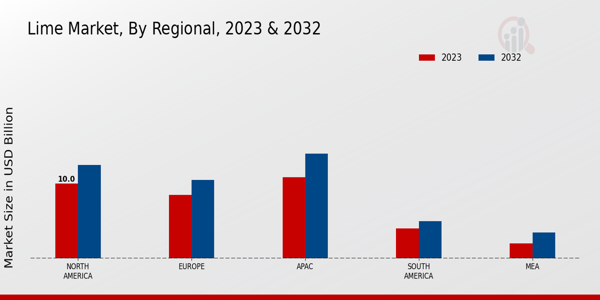The Lime Market is characterized by a dynamic landscape where various players actively compete to establish their foothold and expand market share. The lime market is essential due to its applications across numerous industries, including construction, agriculture, chemical manufacturing, and environmental sustainability.
As the demand for lime products continues to grow, driven by urbanization, infrastructural development, and the global focus on sustainable practices, companies are continually innovating and enhancing their production capabilities.
Competitive strategies, including mergers and acquisitions, collaborations, and product diversification, are common as organizations strive to improve their offerings and meet the evolving needs of their customer base. Understanding these competitive insights is crucial for stakeholders who wish to navigate and capitalize on opportunities within this burgeoning market.
Chemcal has established a robust presence within the Lime Market, leveraging its comprehensive portfolio of products and services tailored to meet diverse industrial requirements. The company is known for its strong manufacturing capabilities and has integrated advanced technologies to optimize production processes, ensuring high-quality lime products.
One of the notable strengths of Chemcal lies in its extensive distribution network, which enables efficient delivery to various sectors, enhancing customer satisfaction. In addition, Chemcal's commitment to sustainability is reflected in its efforts to minimize environmental impact through eco-friendly practices.
The firm also places emphasis on research and development, striving for continuous improvement and innovation that keeps it at the forefront of the industry. Lhoist, another significant player in the Lime Market, brings a wealth of expertise and experience in lime production to the competitive arena.
The company is recognized for its focus on high-quality lime products and comprehensive solutions for its clients across various applications. Lhoist emphasizes sustainability, deploying strategies that align with environmentally friendly practices, which is increasingly important in today's market landscape.
The company's commitment to research and innovation fosters the development of new products that address changing consumer demands and regulatory requirements. Furthermore, Lhoist has effectively built a strong global presence, allowing it to leverage its international resources and expertise to maintain a competitive edge in regional markets.
This strategic positioning has enabled Lhoist to capitalize on growth opportunities while supporting its customers with tailored solutions that drive their success.














